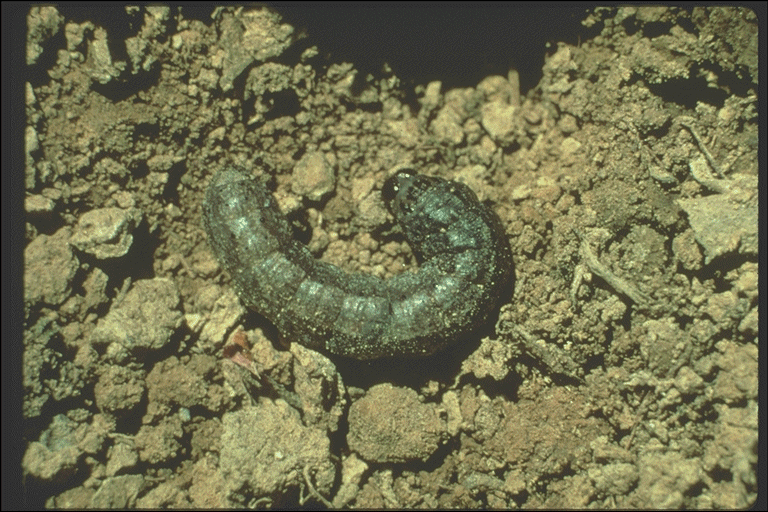
Cutworms are the larvae of moths. These night-flying moths are frequently attracted to lights at night. The 1½ to 2-inch moths are dull-gray to brown with yellow, gray, light brown, and black designs on the front wings. The hind wings are usually solid in color and lighter than the front wings. Moths lay eggs singly or in clusters on the leaves of grasses, weeds, other host plants, and sometimes on the bare ground.
Cutworms are smooth-skinned and somewhat shiny. They range in color from gray to dark brown with distinctive stripes and spots. When fully grown, cutworms can reach 1¾ inches in length. Cutworms commonly coil up in a "c" shape when disturbed.
Cutworms are a potential problem in late-planted fields. There is no way to check for cutworms effectively before transplanting. Some transplant water treatments will provide a degree of preventive cutworm control.
Cutworms can cause extensive damage both in the plant bed and the field. Most damage occurs on young seedlings and early transplants, although some damage can occur later in the season. The black cutworm is a destructive early season pest and may cut many small plants. The variegated cutworm, a climbing cutworm, is most troublesome later in the season. Several other species may cause sporadic problems.
Cutworms may be present in tobacco fields because of early season weed growth. Often these insects are relatively large by the time tobacco is set in the field. Rescue treatments are generally less effective when damage is confined to the underground portion of the plant. Orthene 97 at 3/4 lb per acre (Orthene 75S at 1 lb) or Warrior 1 CS at 1.92 to 3.84 fl oz per acre can be used as a broadcast spray. Proxol 80S, applied in a 12" band over the row can be used as a rescue treatment.